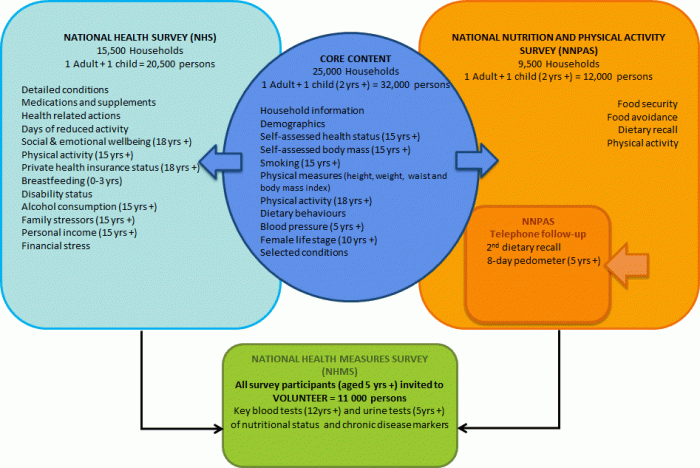In this publication, usual nutrient intakes are compared with Nutrient Reference Values(NRVs) for each age and sex group. The proportion of people consuming less than the Estimated Average Requirement (EAR) for each nutrient, where relevant, is presented. The proportion of a group that has usual nutrient intakes below that group’s EAR is taken to be the prevalence of inadequacy (i.e. the proportion of the group not meeting their requirements for the nutrient). This method of deriving the prevalence of inadequacy is referred to as the ‘EAR cut-point’ method. The exception to this is iron where a different method of calculating the prevalence of inadequate intakes (the full probability method) must be used, due to the way in which iron requirements vary within age and sex groups.¹ Comparisons with EARs are presented for the following nutrients: protein, vitamin A (retinol equivalents), thiamin (vitamin B1), riboflavin (vitamin B2), niacin equivalents (vitamin B3), vitamin B6, vitamin B12, dietary folate equivalents, vitamin C, calcium, iodine, iron, magnesium, phosphorus, selenium and zinc. For more information on the use of nutrient reference values to measure the prevalence of inadequate intakes for groups of people, see Chapter 4 of Dietary Reference Intakes: Applications in Dietary Assessment, 2000.
Inadequate intakes of specific nutrients will have different effects on health within different age and sex groups. For example, if children and adolescents have inadequate intakes of calcium it reduces their ability to develop strong, healthy bones. In general, inadequate intake of a nutrient is likely to increase the risk of adverse health effects, by negatively affecting the normal functions of the body. More information on the scientific basis for the NRVs and likely health effects of not meeting requirements for each nutrient is available at Nutrient Reference Values.
Usual nutrient intakes of an age-sex group are also compared with the Upper Level of Intake (UL) for that group, where relevant. The proportion of the group with a usual intake of a nutrient above the UL is the proportion of the group that is at risk of adverse effects from excess intake. Comparisons with ULs are presented for the following nutrients: calcium, iodine, iron, phosphorus, selenium, zinc, preformed vitamin A (retinol), folic acid, vitamin E, sodium and long-chain omega 3 fatty acids. Note that the proportions exceeding the UL could potentially be underestimates for some nutrients, as they do not include the contribution from dietary supplements.
When usual nutrient intakes are close to the EAR or UL, it does not imply an adverse effect will occur. However, as usual nutrient intakes become more extreme (i.e. further below the EAR or further above the UL) then the risk of an adverse effect occurring will increase.
Although there are no applicable EARs or ULs, usual intakes for some other nutrients included in the 2011-12 NNPAS are also available in the data cubes of this publication (pro vitamin A, natural folate, vitamin E, potassium, caffeine, total fat, saturated fat, monounsaturated fat, polyunsaturated fat, linoleic acid, alpha-linolenic acid, trans fatty acids, cholesterol, carbohydrate, total sugars, dietary fibre, moisture, alcohol and caffeine).


